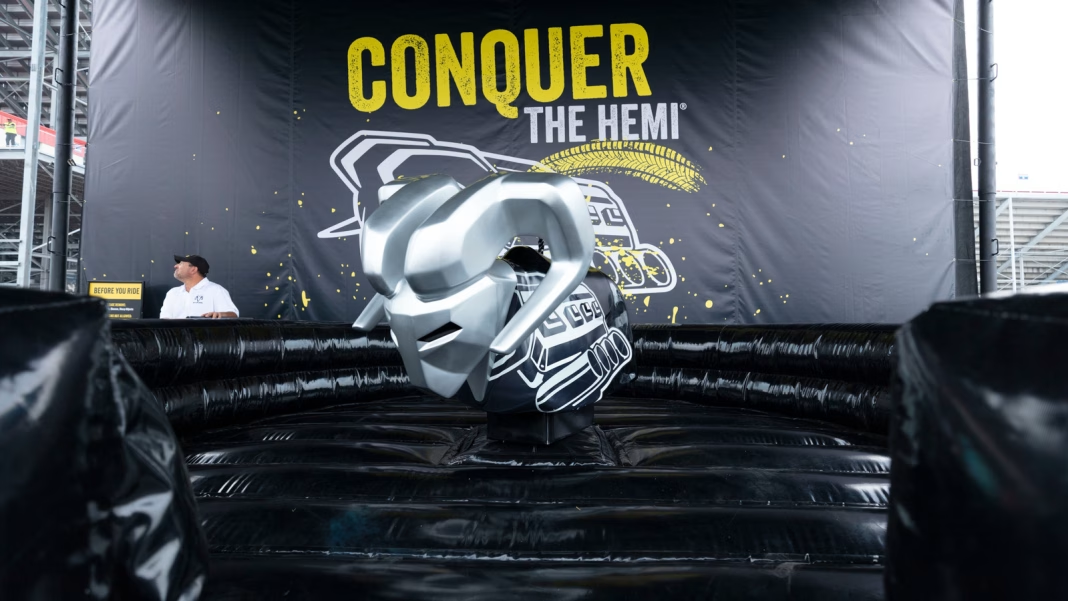What Happened to the Bucking Hemi and Why Does It Matter?
If you’ve been following automotive events lately, you might’ve heard a wild story making the rounds: the Bucking Hemi, that one-of-a-kind mechanical bull ride inspired by Dodge’s legendary Hemi engine, was stolen right out from under everyone’s noses. No, this isn’t some over-the-top marketing stunt or a viral prank gone rogue. It’s a real theft, and it’s left car enthusiasts and event organizers scratching their heads.
How Did the Theft Go Down?
Picture this: the Bucking Hemi, a crowd-pleaser at Roadkill Nights and other gearhead gatherings, was parked and ready for action. Then, in a blink, it vanished. Security footage and eyewitness accounts are still being pieced together, but early reports suggest the theft was both brazen and well-planned. The machine wasn’t exactly subtle—imagine trying to sneak away with a mechanical bull painted up like a muscle car. Yet, whoever pulled this off knew what they were doing.
Why Was the Bucking Hemi So Special?
This wasn’t just any carnival ride. The Bucking Hemi was a mechanical marvel, blending the spirit of classic American muscle with the fun of a rodeo bull. It was built to celebrate the power and legacy of the Hemi engine, a name that’s been synonymous with performance for decades. Fans lined up for a chance to ride it, and it quickly became a symbol of the Roadkill Nights event’s playful, rebellious energy.
Beyond the spectacle, the Bucking Hemi represented a creative collaboration between engineers, artists, and car culture icons. It’s not something you can just order online or whip up in your garage over a weekend. Its loss stings not just for the organizers, but for the whole community that rallied around it.
What’s the Impact on Car Culture Events?
Theft at car shows isn’t unheard of, but it’s usually limited to parts or smaller collectibles. Stealing a custom-built mechanical bull is next-level. This incident has sparked real conversations about event security and the vulnerability of unique, high-profile attractions.
Organizers are now rethinking everything from overnight surveillance to how they display rare or valuable pieces. Some are even considering RFID tracking or GPS tags for their most prized assets. The message is clear: as these events grow in popularity and spectacle, so does the need for smarter, more robust protection.
What Are the Chances of Recovery?
Recovering stolen custom vehicles or showpieces is notoriously tough. According to the National Insurance Crime Bureau, recovery rates for stolen specialty vehicles hover around 30-40 percent, depending on how quickly the theft is reported and how unique the item is. The Bucking Hemi’s distinct look could work in its favor—after all, it’s not exactly easy to hide. But the longer it’s missing, the slimmer the odds.
Law enforcement and the event’s organizers are urging anyone with information to come forward. Social media has played a big role in spreading the word, with enthusiasts sharing photos and updates in hopes of spotting the missing bull.
What Can Other Events Learn from This?
If you’re involved in organizing car shows or public exhibitions, this is a wake-up call. It’s not just about locking up at night or hiring a security guard. Think about layered security: cameras, alarms, and even community watch systems where fellow enthusiasts keep an eye out for anything suspicious.
Insurance is another key piece. Make sure your policy covers not just standard vehicles but also custom builds and one-off creations. Document everything—photos, serial numbers, unique features—so you have a fighting chance if the worst happens.
The Big Takeaway
Losing the Bucking Hemi isn’t just a quirky headline—it’s a reminder that even the most beloved icons can disappear in an instant. For event organizers and fans alike, the lesson is simple: protect what matters, stay vigilant, and don’t assume something is too big or too bold to steal. The big takeaway? Safeguarding your passion projects isn’t about perfection—it’s about smarter adjustments. Start with one change this week, and you’ll likely spot the difference by month’s end.


